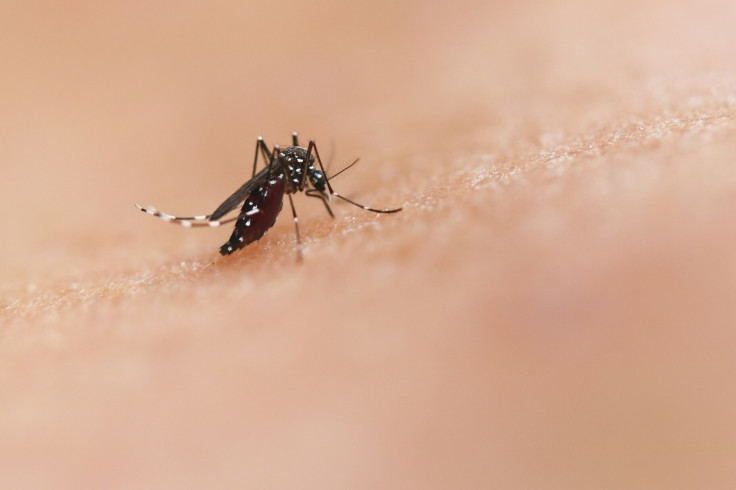Another Pandemic? Chikungunya Virus' Rising Cases Prompt Measures Similar To COVID-19 Crisis
Here's what you need to do if you got infected.

A sudden outbreak of chikungunya virus has swept through southern China, with more than 7,000 cases confirmed in Guangdong province since July, prompting local authorities to roll out public health measures reminiscent of the strict COVID-19 controls.
The mosquito-borne illness, which causes severe joint pain, high fever and rash, has hit the city of Foshan hardest, fuelling fears of wider spread across the densely populated province. Officials have moved swiftly, isolating patients under mosquito nets, tracking medicine sales through real-name registration and unleashing drones to detect hidden breeding sites, all in a bid to halt transmission before it spirals out of control.
Cases Surge in Guangdong Province
According to BBC News, Guangdong has recorded 7,716 chikungunya infections in 2025 so far. From 27 July to early August alone, 2,892 new cases emerged. Foshan City has been the hardest hit, reporting 2,770 of those new infections.
Other cities including Guangzhou and Zhanjiang have also seen rising numbers. Health officials believe the outbreak began after an imported case triggered local transmission in July.
On Monday, 4 August, Hong Kong confirmed its first imported case in a boy who had recently returned from Foshan with fever, rash and joint pain.
Despite the sharp rise, most cases are described as mild, and no deaths have been reported.
COVID-Style Measures to Stop Spread
Taking inspiration from pandemic-era measures, hospitals in Foshan are admitting all chikungunya patients and keeping them isolated under mosquito nets until they test negative or have spent at least seven days in care.
Real-name registration for purchasing symptom-relief medicines has been introduced to help track potential cases. Public health teams have been dispatched to remove stagnant water, a prime breeding ground for the Aedes mosquitoes that spread the virus.
Officials have warned of fines of up to 10,000 yuan (£1,080) for failing to eliminate mosquito breeding sites. Innovative control measures have also been rolled out, including releasing mosquito-eating fish into lakes and using drones to locate pools of standing water.
Although authorities have floated quarantine advisories, some restrictions on travellers have already been eased.
How Chikungunya Spreads
The chikungunya virus is primarily transmitted by bites from infected Aedes aegypti and Aedes albopictus mosquitoes, which are also known to spread dengue and Zika. The virus is not spread directly from person to person, except in rare cases of mother-to-child transmission during childbirth.
Prevention relies heavily on avoiding mosquito bites by using repellents, sleeping under nets, wearing long sleeves and removing standing water near homes.
Symptoms Can Linger for Months
Symptoms typically appear three to seven days after being bitten by an infected mosquito. Early signs include sudden high fever, severe joint pain that can be debilitating, rash, headache, swollen joints and muscle pain.
While most patients recover within a week, joint pain can last for months or even years. Vulnerable groups, including newborns, the elderly and people with pre-existing health conditions, are at greater risk of complications. Fortunately, deaths from chikungunya are rare.
No Specific Cure Yet
There is currently no antiviral medication for chikungunya. Treatment focuses on managing symptoms with pain relief and fever-reducing medication.
In Foshan, patients are not discharged until they either test negative for the virus or complete a week in isolation. Early diagnosis and prompt isolation are considered critical in preventing further spread.
Could It Become a Pandemic?
Since it was first identified in 1952, chikungunya has caused outbreaks in more than 110 countries, affecting regions in Africa, South and Southeast Asia, the Americas and parts of Europe. The presence of Aedes mosquitoes worldwide and increasing international travel mean the risk of imported cases remains.
However, unlike COVID-19, chikungunya cannot spread directly from person to person, making large-scale global transmission less likely. Chinese health officials say the outbreak in Guangdong appears to be under control thanks to aggressive mosquito control measures and a decline in new cases.
Experts believe that with continued vigilance, personal protection and environmental management, a pandemic is unlikely. Schools and workplaces have remained open, with an emphasis on prevention rather than lockdowns.
The Bigger Picture
The outbreak in Guangdong highlights the ongoing threat posed by mosquito-borne diseases and the need for rapid, coordinated public health responses. While chikungunya does not have the same explosive transmission potential as airborne viruses, its debilitating symptoms and potential for long-term effects make it a serious concern.
The response in Foshan and surrounding areas offers a model for targeted, science-based interventions that balance public safety with maintaining daily life.
© Copyright IBTimes 2025. All rights reserved.





















